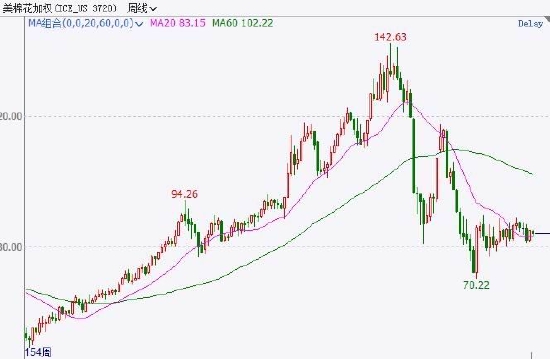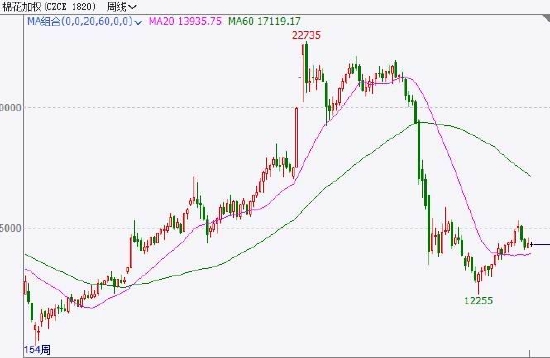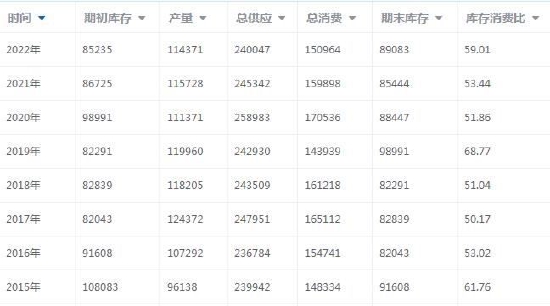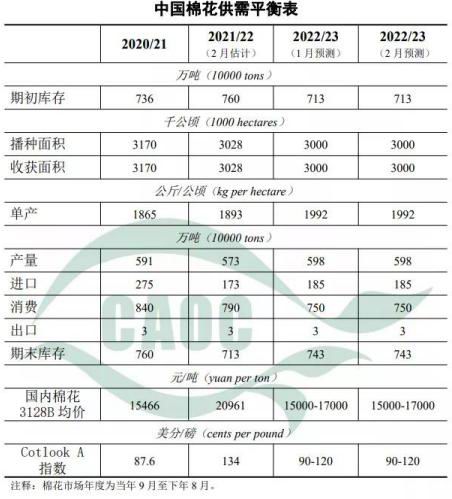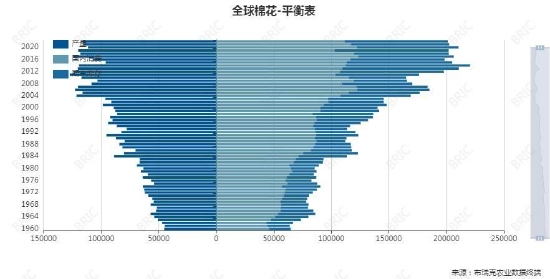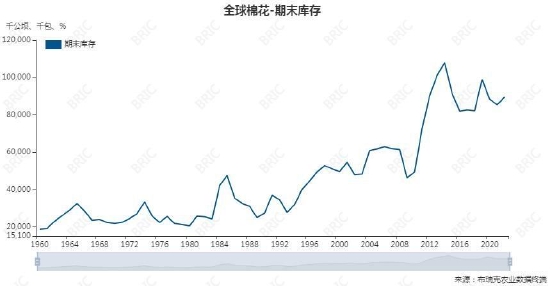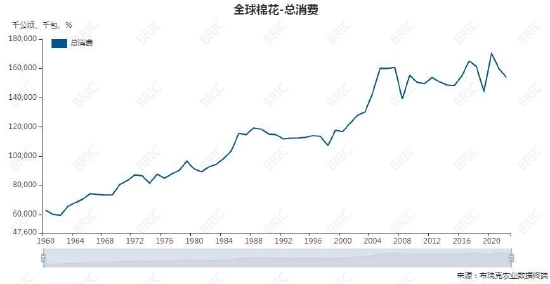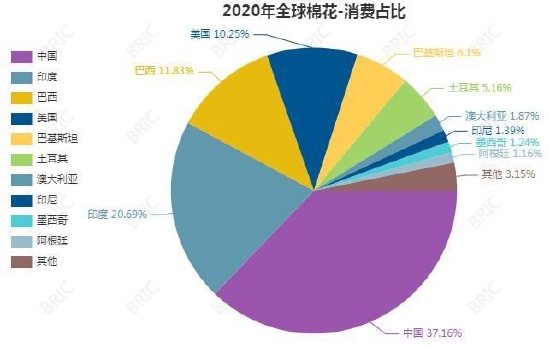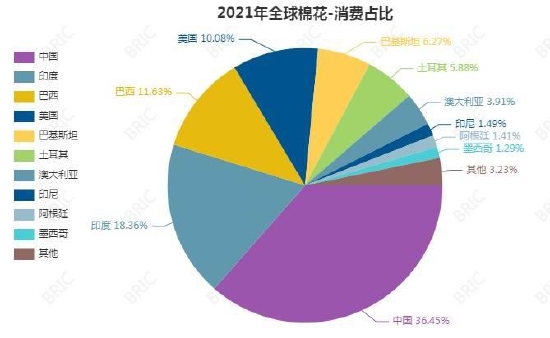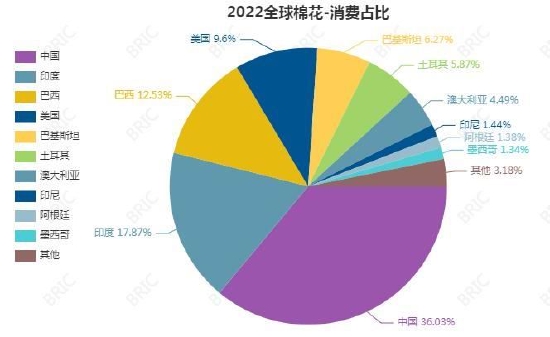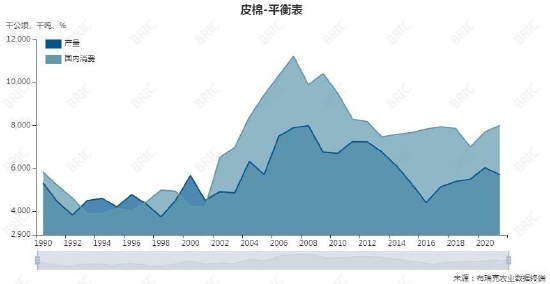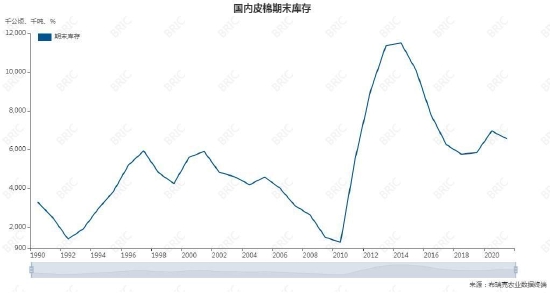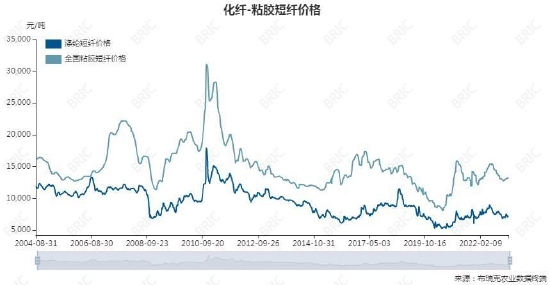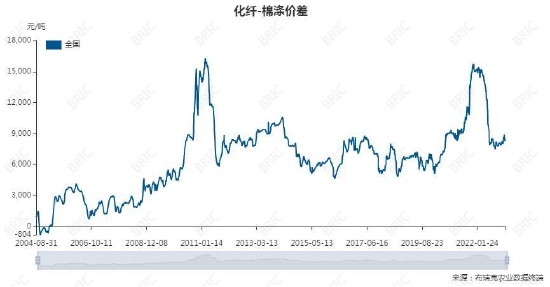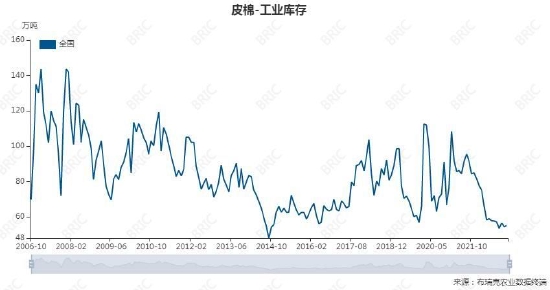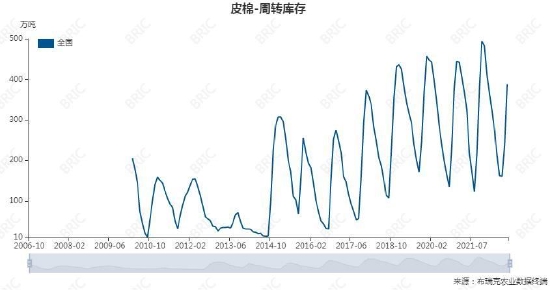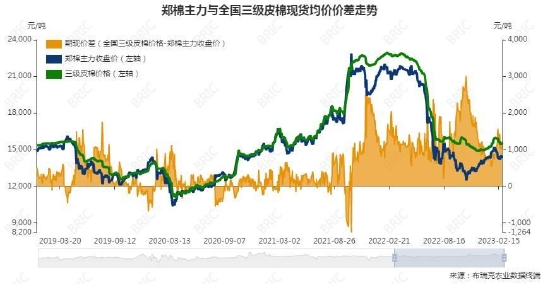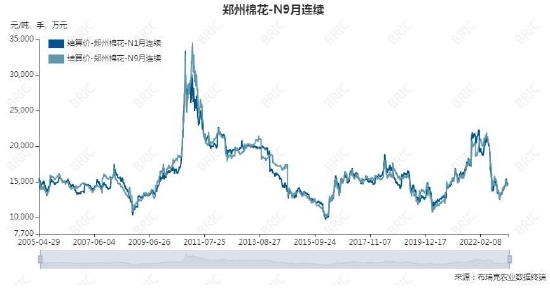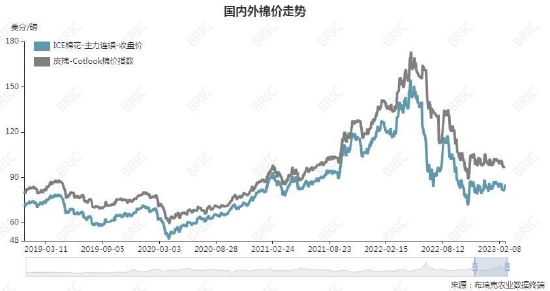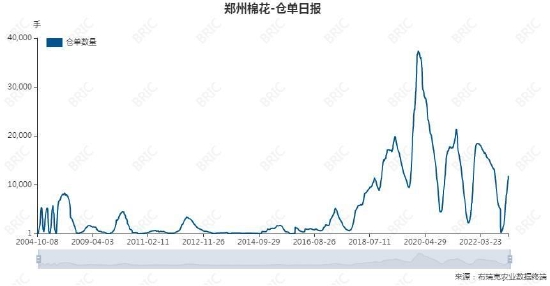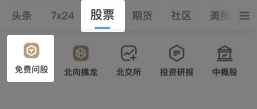Part I Market Review and Logical Sorting
1、 Trend review
Figure 1: American Cotton Index
Source: Dayue Futures
Analysis of the trend of American cotton: USDA's February report was slightly empty. The inflation in the United States has slowed down, and the purchasing power of money has declined to support prices. At the same time, the next year cotton The global output has decreased, and cotton has been arranged horizontally, waiting for the trend direction.
Figure 2: Zheng Mian index
Source: Dayue Futures
The trend of domestic cotton is basically the same as that of foreign cotton. With the end of the epidemic, consumption is expected to recover, and Zheng Mian has made up for it in the early stage. All regions pay attention to the order market in the four peak seasons of gold, silver and silver. Enterprises exporting to Europe and the United States still cannot purchase domestic Xinjiang cotton, and Xinjiang cotton's de stocking is slow. Textile enterprises buy as they use, the operating rate has not increased in a large scale, and downstream consumption is stable. Domestic cotton has bottomed out and rebounded, with the trend on the right. The future trend is volatile and the main actor, and the short-term interval is volatile and recuperating.
2、 Logical combing
The Biden government's policy towards China has not improved, and low-end textile orders have shifted to Southeast Asia. The United States increased restrictions on the import of Xinjiang cotton products, and the customs seized cotton textile products. China's clothing exports to the United States can only purchase foreign cotton, and began to decline, which has a greater impact on domestic Xinjiang cotton. Europe followed in the footsteps of the United States to suppress Xinjiang cotton, and the Swedish BCI organization called on its members not to purchase Xinjiang cotton. The obvious price advantage of polyester and other substitutes in the near future has also led to a reduction in cotton demand. The weather for planting new cotton in Xinjiang is good, and the future yield is guaranteed. The above early negative factors still exist, but there is a turnaround. With the end of the epidemic, domestic consumption will pick up in the future. The bottom has been identified. Medium and long-term shocks will rise, and the trend will move forward three times, retreat two times, and slowly rise.
Part II Fundamentals Analysis
1、 Supply and demand data
1. In the late period of the global cotton epidemic, consumption recovered, and the inventory consumption ratio fell to a three-year low. With the price of cotton falling back, the future planting income will decrease and the output will decrease. However, there is limited room for further growth in consumption in the short term, and cotton may reach the balance of supply and demand in the new year.
Data source: Brick USDA Unit: thousand tons
2. China's supply and demand situation has not changed much. In the medium and long term, consumption has steadily increased, and output has remained basically unchanged. The gap of about 2 million tons needs to be made up by imports. Domestic inventory increased slightly.
Data source: Ministry of Agriculture Unit: 10000 tons
2、 Analysis of supply and demand pattern
1. The February report of the US Department of Agriculture was slightly empty.
2. Domestic cotton supply and demand remained tight balance.
3. The import data has increased over the previous years and is now stable at about 2 million tons, just making up for the cotton supply gap.
In terms of import, with the decline of domestic inventory year by year, the import volume has gradually increased from 970000 tons of import quota in the earlier period to 2 million tons of sliding tax quota. In order to maintain the stability of cotton prices, a certain amount of inventory is required. At present, the inventory is mainly commercial inventory, and the State Reserve will only participate in the purchase and disposal of inventory when the price fluctuates significantly. The policy has changed from the stable price of the purchase of the state reserve in the early stage to the target price subsidy now. At present, the inventory of the State Reserve has basically bottomed out. On July 13, 2022, a new round of national reserve will begin to purchase and store, with a target of 300000 to 500000 tons. The price of purchase and storage will be low, and the market parties will not actively pay for and store, so the amount of purchase and storage will be very small.
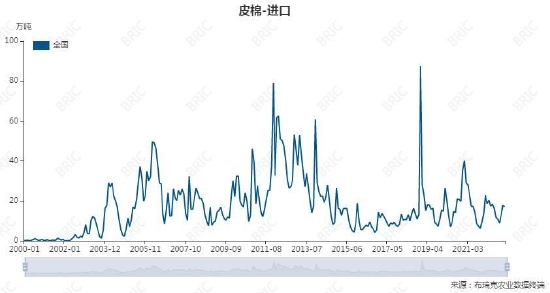
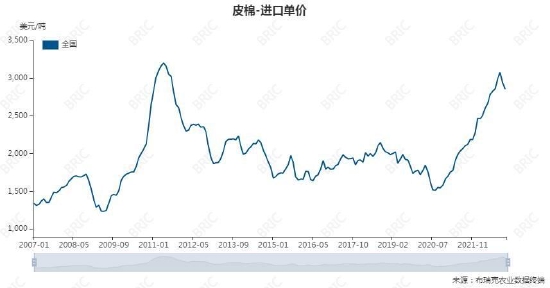
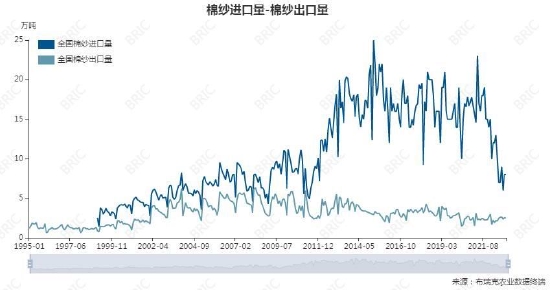
Chart source: Brick
4. Substitutes
The output of polyester and staple fiber has increased year by year, which has obvious substitution effect on cotton. In terms of textile industry increment, a large part is replaced by staple fiber. In 2020, Zhengshang Exchange will list staple fiber varieties, and the price trend has a great correlation with cotton. With the sharp rise in cotton prices, staple fiber has obvious advantages, and export textiles are not subject to sanctions in Europe and the United States.
Chart source: Brick
3、 Industrial status
1. Xinjiang cotton production cost.
The proportion of cotton output in Xinjiang has increased year by year, while that in the mainland has gradually decreased. In October 2022, new cotton will come into the market, and the ginning plant will reasonably control the cost, without any rush for revenue. The acquisition price is about 12000-13000, the acquisition cost is low, and there is hedging profit at present.
2. The target subsidy price of cotton is 18600 yuan per ton.
Cotton farmers have a high enthusiasm for planting, basically ensuring the harvest in case of drought or waterlogging, and the country is the sole source. Xinjiang has promoted large-scale planting technology and mechanized collection. In northern Xinjiang, more than 90% of cotton can be collected by machine, while in southern Xinjiang, more than 80% of cotton can be collected by machine. In the future, the rate of machine picking will be further improved, and the production cost is expected to be further reduced.
3. Inland transfer garment processing factory
A large number of garment processing plants in the mainland are distributed throughout Xinjiang. Poverty alleviation counterpart, satellite factory entering the village, garment order counterpart purchase, factory tax relief, etc. As Europe and the United States believe that our enterprises have the phenomenon of "forced labor", they will not import products from all over Xinjiang. Pay attention to the later policies and the trend of the international situation.
4. The national reserve inventory is less than 2 million tons, mainly commercial inventory.
At present, the function of cotton reserve is handed over to the market. At present, the turnover stock is still in a high position, and the downstream can buy as needed. With the weak price, the State Reserve made a purchase, and the policy has a foundation.
4、 Macro environment and capital: inflation eased in Europe and the United States
1. Global inflation is easing, and interest rates in Europe and the United States have increased significantly, leading to a fall in commodity prices.
2. Russia Ukraine war, agricultural products, fertilizer and other export uncertainties.
3. European and American sanctions against Xinjiang cotton continued.
4. The clear intention of Europe and the United States to support Southeast Asia has led to a large transfer of low-end textile orders.
5. The price of crude oil rises, raising the planting cost.
6. The domestic epidemic is over, and consumption will pick up in the future.
5、 Key variables
1. Sino US trade disputes
The extension of sanctions on Xinjiang cotton products has affected textile trade. The question of whether the United States will abolish import taxes on China.
2. Political disputes between China and Europe affect the economy
Europe plays the human rights card and suspends the China EU Bilateral Investment Agreement. It remains to be seen whether the bilateral relations will further deteriorate in the future.
3. Weather conditions of new cotton sowing
The harvest of new cotton is nearing the end, and this year's output is stable, in line with expectations.
4. Western Sanctions on Xinjiang Cotton
The members of BCI organization have an attitude towards purchasing Xinjiang cotton, and foreign trade enterprises avoid Xinjiang cotton raw materials.
Part III Performance and Technology of Futures Market
1. Basis: cotton futures discount spot, basis narrowed slightly.
2. Contract spread: 05 contract became the main contract, and the futures far month rose slightly.
3. Import price difference: international cotton prices hit the bottom and rebounded, with both domestic and foreign prices rising and falling.
4. Warehouse receipts: As of February 27, 2023, there were 12674 warehouse receipts, 506960 tons. New warehouse receipts increased significantly.
Part IV Overview and Operation Strategy
1、 Price analysis
1. Influential factors: In 2023, inflation in Europe and the United States will ease, the Federal Reserve will raise interest rates less, the dollar will remain high and fluctuate, and the overall commodity will shake. With the end of the domestic epidemic, consumption is expected to pick up, and all parties are looking forward to the peak consumption season of gold, silver and silver.
2. Market rhythm: American Cotton is in the horizontal consolidation stage, focusing on the future breakthrough direction.
3. Evolution logic: the fundamentals are slightly empty, focusing on domestic and foreign consumption, and the recovery of foreign trade orders.
4. Technical analysis: cotton rebounded at the bottom, and has been in the right trading range. The short-term sideways consolidation may continue to bounce in the future.
2、 Operation strategy
Cotton prices rebounded at the bottom, and the medium - and long-term trend fluctuated upward. Pay close attention to the consumption peak season of "Jin San Yin Si" in the short term. The main contract price may remain in the range of 14000-15000.
Dayue Futures Wang Mingwei
Safe, fast and guaranteed futures account opening on Sina cooperation platform

Sina statement: This message is reproduced from Sina's cooperative media. The purpose of posting this article on Sina.com is to convey more information, and does not mean to agree with its views or confirm its description. The content of this article is for reference only and does not constitute investment advice. Investors operate accordingly at their own risk.
Massive information, accurate interpretation, all in Sina Finance APP
Editor in charge: Song Peng
